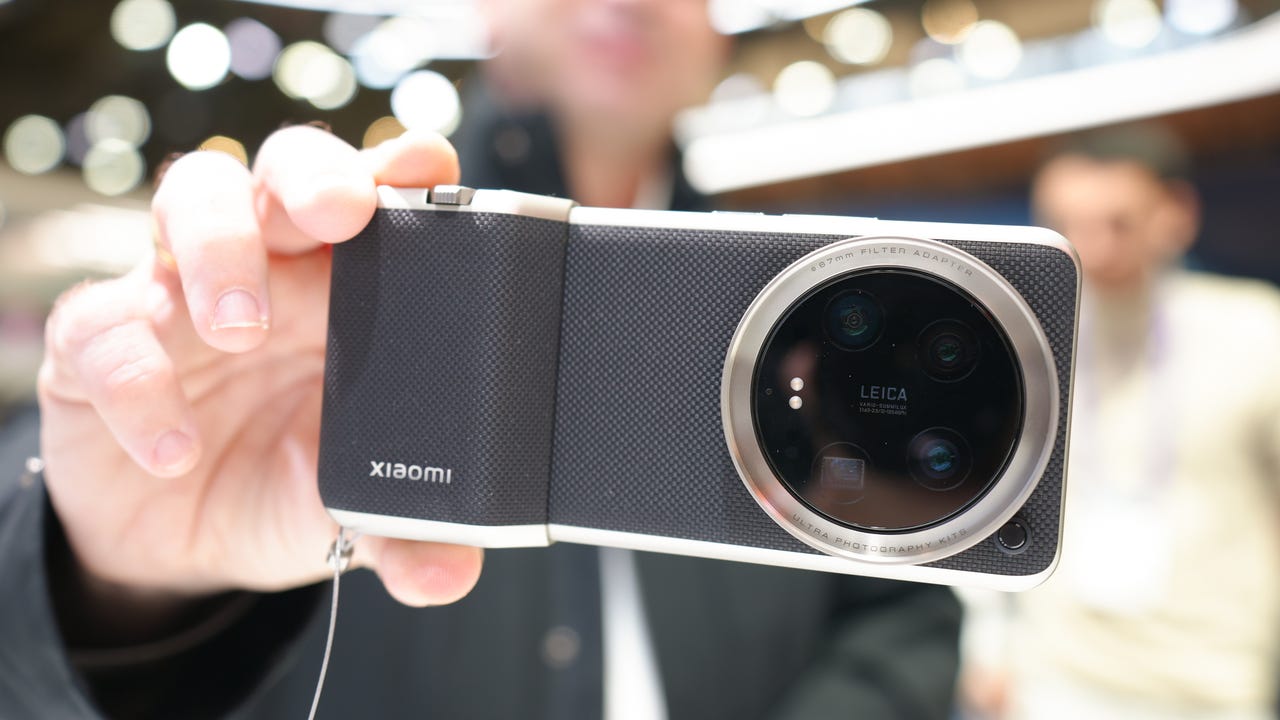
































We're at the final stretch of this year's Mobile World Congress, with just about every briefing scheduled, keynote presented, andlive demo delivered. (Obligatorily, tapas eaten.)
Also: The best MWC products coming to the US this year
Whether you've been keeping up with the week-long event or just catching up, see below my curtain call of the very best gadgets and gizmos at this year's Barcelona trade show, from wearables to laptops to smartphones, and, of course, plenty of concepts.
I've also listed my honorable mentions (and a showstopper award) because the sheer volume of quality products from brands across the world this year wasthatastounding.
Of all the phones I laid my hands on this week, no device left a bigger impression than Honor's Magic 6 Pro. Beyond the flagship Qualcomm Snapdragon processor, 12GB RAM/512GB storage configuration, 5,600mAh battery, and Dynamic Island-like "Magic Capsule" interface that morphs background applications (timer, music player, voice recorder, etc.) into the hole-punch camera, Honor has integrated some of the most useful AI features I've seen from any phone maker these past 12 months.
Also: I tried a rollable phone for the first time, and it made even my foldable feel outdated
"Magic Portal" is among the standouts, serving as an intelligent assistant that recommends apps and experiences based on what you highlight on screen, including Google Maps for when you select an address or your Calendar app when you select an upcoming event in a text conversation. Motion Sensing Capture is my personal favorite, leveraging AI to take still pictures of fast-moving subjects. I demoed the feature with a basketball player at MWC and the results were shockingly crisp.
The sequel to one of the lowest-rated smartwatches we've reviewed at is a redemption arc in every sense, offering the best of what its predecessor did while doing away with its faults. In fact, the battery life and efficiency of the newest OnePlus Watch, as my colleague Matthew Miller noted in his review this week, is among the best we've tested, reaching as far as 100 hours with a single charge.
Also: Another major phone maker is officially joining the smart ring race, and it's not Apple
That's due largely in part to a new hybrid OS architecture, with theOnePlus Watch 2 leveraging its Real-Time Operating System (RTOS) for basic tasks like counting steps and tracking time, while switching to Google's Wear OS 4 for more strenuous tasks. At$299, the Watch 2 is far from perfect; I agree with Miller that the 47mm size is not the most inclusive, and the absence of ECG reading, women's health tracking, and other features will be felt by more demanding users.
Lenovo's ThinkPad T series has never been about the glitz and glamour, but this year's model has received notable upgrades both externally and internally. On the outside, the aluminum-covered surrounds Lenovo's communications bar, which houses the webcam and Windows Hello Sensors for facial recognition. This design contributes to slimmer bezels and a handy touch point when lifting the lid open.
Also: This Harvard startup may soon be responsible for your phone's most-used security feature
More impressively, the ThinkPad T14 Gen 5 is fitted with Intel's Core Ultra processor, up to 64GB of RAM and 2TB of storage. This model is also more user-repairable than ever, thanks to Lenovo's partnership with iFixit, which has prepared special repair guides that enable users to swap out batteries, SSDs, WWAN, and more at their leisure.
Concepts were everywhere at MWC, but Lenovo's Project Crystal stood out from the crowd with its transparent micro LED displayand keyboard. Was this onanyone's laptop-of-the-future bingo card? Probably not, but Lenovo believes the see-through design of the screen lends itself to a use case that most readers may be quite familiar with -- multimodal AI processing.
Also: I went hands-on with Lenovo's transparent laptop at MWC, and it's surprisingly functional
By capturing what's behind the laptop with a rear camera, the laptop can present digital overlays for added context, such as what type of plant or species of animal you're looking at. I'm not fully convinced that a laptop is the most practical form factor for such applications --Meta's Ray-Ban smart glasses or Rabbit's R1 feels more natural -- but it's a fascinating concept that made MWC all the more interesting this year.
At MWC this year, no brand or product was more disruptive than Humane and its laser-beaming Ai Pin. I wandered past the Qualcomm and SK Telecom booths several times every day this week, and there was always a crowd with smartphones and cameras pointing at the one product that may just replace those very devices in the future.
Also: The most jaw-dropping demo at MWC was from a brand I wasn't expecting to see
Humane is currently selling the Ai Pin exclusively in the US, which makes all the traction it's received in Barcelona that much more of a tease. Regardless, demoing a gadget as polarizing as the Ai Pin may be the best decision the startup has made yet. Here's to hoping it carries that momentum into a competitive product launch season this spring.
 Горячие метки:
Технологии и оборудование
1. Смартфоны
Горячие метки:
Технологии и оборудование
1. Смартфоны